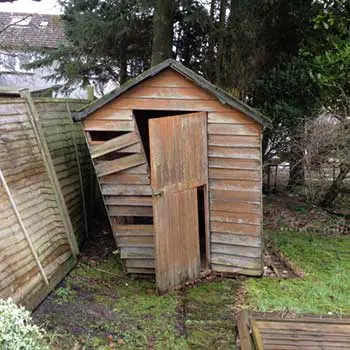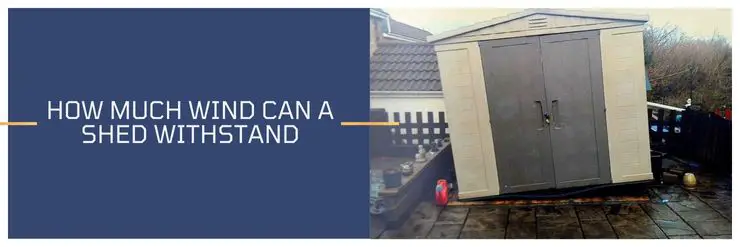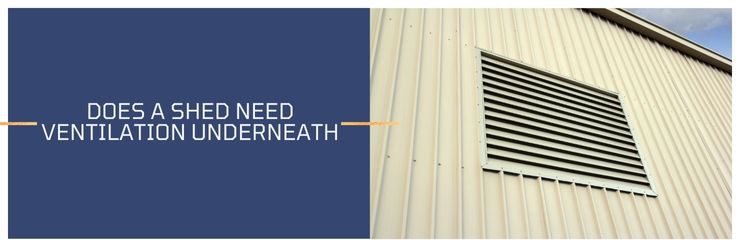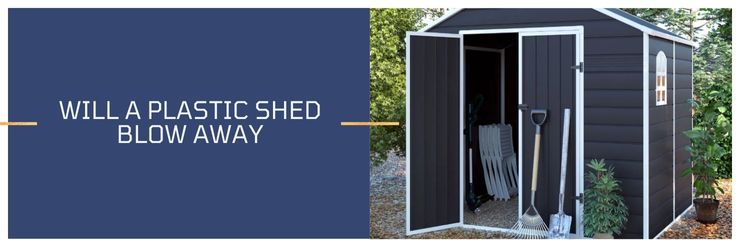When it comes to the wind, everyone seems to have a different opinion on how much force a structure can withstand.
Some people think that as long as you have a strong foundation, your building will be okay. Sheds are typically pretty sturdy structures. But, how much wind can a shed withstand?
The materials used make a big difference in the overall strength of the shed. A shed that is built using heavy-duty materials, such as steel, can withstand high winds of up to 70 mph.
If you live in an area that is not prone to hurricanes or tornadoes, then a shed made out of lighter materials, such as wood, will work just fine.
We’ll explore what factors play into how strong a shed needs to be and what homeowners can do to make their sheds wind-resistant.
How Much Wind Can a Shed Withstand
Most companies will give a wind rating to their sheds. The ratings are usually given in MPH (miles per hour) and will range from 20 to 150 MPH.
The ratings are based on the ability of the shed to withstand wind gusts. The higher the rating, the more wind the shed can withstand.
In the United States, the highest average wind speed is found in the Midwest, where tornadoes are more common. Winds that reach or exceed 50 to 60 mph are considered destructive.
According to the National Weather Service, sustained winds of 47 to 54 MPH are strong enough to cause damage to trees, and blown-off roofing shingles at 55 MPH or higher can cause widespread damage to homes and other structures, as well as uproot trees.
If you’re looking for a shed that can stand up to the strongest winds, a metal shed is a way to go. This material can withstand winds of up to 70 mph, making them an ideal choice for those who live in hurricane-prone areas.
Which Type of Shed Can Withstand The Strongest Winds
Metal sheds are the most durable against high winds, typically being able to withstand sustained winds of up to 70 mph.
This makes them an ideal choice for people who live where tornadoes are more common.
Materials are one of the key factors that determine how much wind can a shed withstand. Wood, plastic, and metal all have different wind ratings.

Metal sheds tend to have the highest ratings because they are often made with steel frames that are reinforced. This makes them much less likely to be damaged or toppled over in high winds.
Wood and plastic sheds tend to have lower ratings because they are not as sturdy as metal sheds. However, they can withstand average windy conditions if they are properly secured.
Some other factors that will affect a shed’s ability to withstand wind include the type of roof, the number of windows and doors, and how well the shed is anchored to the ground.
Does a Shed Need To Be Anchored
Most sheds will need to be anchored in some way to prevent them from being blown over in high winds.
One way to do this is to pour a concrete footing around the perimeter of the shed. This will provide extra stability and prevent the shed from being moved by strong winds.
It’s always best to anchor a shed if you live in an area with high winds. This will prevent the shed from being blown over and potentially damaging your property.
Cement or concrete footings are the best way to anchor a shed because they provide extra stability. These materials are very strong and will not budge in high winds.
This type of anchoring is often used for metal sheds because they are very heavy and need a strong foundation.
Wood and plastic sheds are not as heavy as metal sheds, so they may not require a concrete footing.
Instead, you can anchor them with screws or bolts that are driven into the ground. This will provide enough stability to keep the shed in place during high winds.
Another way to anchor a shed is by using straps or cables that are attached to the shed and then staked into the ground. This can be a good option if you’re renting or don’t want to drill holes into the ground.
How To Protect The Shed From Strong Winds
To protect your shed from high winds, there a few things you can do.
Anchoring
Anchoring is attaching your shed to a secure foundation so that it doesn’t blow away in strong winds.
You can do this by bolting the shed to concrete footings or anchors, or by using straps or chains to secure it to something heavy and immovable like a large tree or boulder.
Reinforcing
Reinforcing the shed walls, roof, and the door will make it more resistant to damage from high winds.
You can do this by adding reinforcement bars or sheets to the inside of the shed walls and door. If you’re using a metal shed, make sure that it has a steel frame.
Adding a windbreak
A windbreak is a barrier that breaks the force of the wind and protects the shed from being damaged.
One way to do this is to plant tall evergreen trees or shrubs around the perimeter of the shed. You can also build a solid fence or wall around the shed, or install windbreaks made of fabric or other materials.
Bracing
Bracing the shed walls will help to keep them from being damaged or toppled over by high winds. You can do this by installing horizontal and diagonal braces inside the shed.
You can also add bracing to the outside of the shed by attaching brackets or cross beams to the walls.
Covering
Covering the shed with a tarp or sheet of plywood will help to protect it from flying debris and high winds. Make sure that the cover is securely fastened so that it doesn’t blow away in the wind.
You can also buy specially-designed covers that are made to protect sheds from high winds. These covers typically have straps or cords that can be used to secure them to the shed.
Conclusion
How much wind can a shed withstand? To be safe, most sheds should be able to withstand winds minimum of 50 mph.
High winds can cause damage to even the sturdiest of sheds, so it’s important to be aware of the potential risks before severe weather hits.
If you live in an area with high winds, it’s a good idea to take steps to protect your shed. You can do this by anchoring the shed to the ground or adding extra support to the walls and roof.






